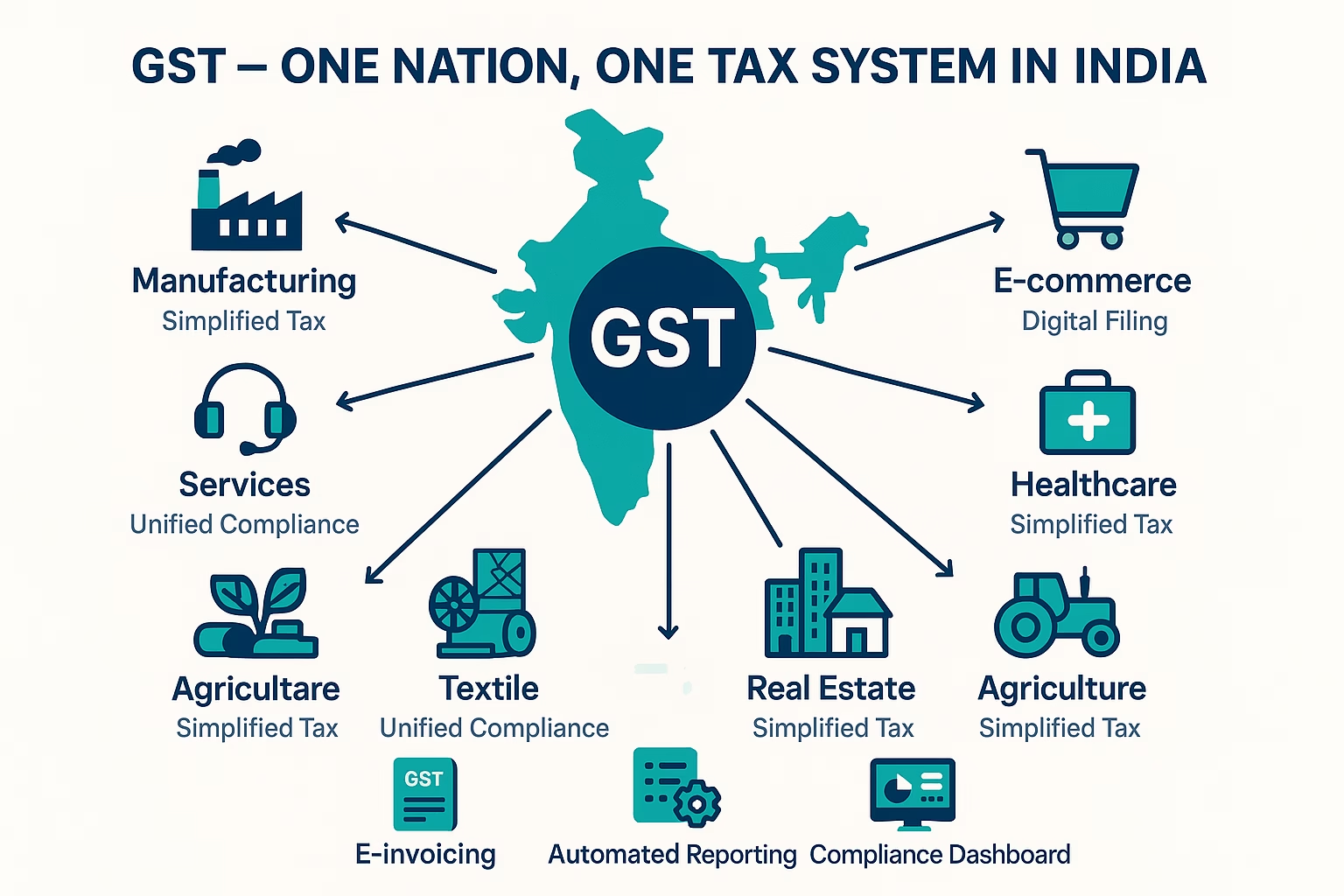Ever wondered how GST Analysis reveals the real reasons behind a single tax for all goods, services, software, and daily transactions in India? GST, India’s landmark ‘one nation, one tax’ initiative, has transformed the taxation landscape, making compliance easier and business operations smarter.
This guide digs deep into GST and links the latest insights, compliance tips, and sector trends for your business—plus actionable internal resources to help you go further, faster.
What is GST?
GST (Goods and Services Tax) is a unified, destination-based tax levied on the supply of goods and services across India. GST replaced multiple indirect taxes like VAT, excise, and service tax with a single framework, simplifying payments, returns, and compliance for businesses and consumers alike.
Quick facts:
- Introduced in 2017; further reformed in 2025
- Main rate slabs: 0%, 5%, 12%, 18%, and 28%
- Applies to manufacturing, distribution, retail, and services—from textiles to banking, e-commerce, and more.
For a full list of item-wise GST rates, current updates, and GST Council notifications, visit the complete guide to GST structure, rates, and compliance in India for 2025.
How Does GST Work in India?
GST is structured into Central GST (CGST), State GST (SGST), and Integrated GST (IGST). Businesses collect GST on sales, claim credits on purchases, and file regular returns. This approach removes ‘tax on tax’ cascading, fostering transparency and ease for everyone involved.
Why is GST Important for Businesses in 2025?
-
Compliance is easier (e-invoicing, online filings, QRMP scheme)
-
Tax evasion has dropped—more businesses register and pay their dues
- Pan-India operations are streamlined: No more juggling multiple state taxes
How to Register and Verify a GST Number?
To lawfully collect GST, every business must obtain a GSTIN and keep it up-to-date. Verification ensures authenticity and protects you from fraudulent vendors.
Step-by-step instructions: Check out our actionable how-to on GST number verification—how to verify GSTIN online quickly.
Which GST Software Should You Use?
Choosing dedicated GST software is vital for accurate filings, invoice generation, and compliance automation. Most leading tools offer pan-India coverage, seamless integration, and compliance checks. See our Best GST Software List for India for expert recommendations.
What’s Changing in GST: Reforms and New Rates
The GST Council is exploring further rate rationalization and reforms in 2025, with moves toward a three-tier slab system, improved compliance, and enhanced digital tools.
CFO Insights:Gain an edge with the CFO Playbook for GST Reform 2025: 3-Tier Rate, GSTAT, IMS.
Industry Impact: GST Across Sectors
From manufacturing and pharma to e-commerce and real estate, businesses are reaping GST’s benefits—including reduced compliance costs, faster logistics, and improved transparency. Discover the impact of GST on business compliance and sector insights.
Opinions of Different Sectors on GST
GST has sparked diverse responses across Indian industries, reflecting its wide-ranging impact on business models, taxation, and compliance dynamics.
- Manufacturing Sector: Manufacturers appreciate the simplification of multiple indirect taxes into a single GST regime, which reduces the administrative burden and compliance costs. The free flow of goods and easier claim of input tax credits has improved operational efficiency. However, some manufacturers express concerns about compliance complexities for small enterprises.
- Service Sector: Service providers including IT, telecom, and financial industries welcome GST as it reduces cascading taxes and streamlines pan-India compliance. However, many service businesses highlight challenges around multiple registrations in different states and transition hurdles.
- E-commerce: The sector views GST positively for creating a unified tax environment, but the introduction of Tax Collection at Source (TCS) at 1% has been met with mixed feelings. While it improves accountability, e-commerce companies find compliance and filing requirements increasingly complex.
- Pharmaceuticals & Healthcare: This sector benefits from a level playing field under GST, which aids generic drug manufacturers and boosts medical tourism. However, pricing concerns remain, with the sector hoping for tax relief to keep healthcare affordable.
- Textile Industry: Textile manufacturers acknowledge increased transparency and hope GST will enhance exports. Yet, some SMEs face transitional challenges, especially regarding changes in excise duties on cotton and raw materials.
- Real Estate: The real estate sector values the transparency and accountability that GST brings but awaits clear tax rate decisions to fully gauge benefits. Compliance for developers and builders has become more structured, though some complexities persist.
- Agriculture: GST’s role in simplifying interstate transportation of agricultural goods is largely praised, potentially boosting agri-product availability and revenues for farmers.
- Startups and Freelancers: Startups see GST as a booster due to eased VAT structures and available input tax credits, while freelancers find clearer service tax guidelines, making online filing more straightforward.
Ready to simplify your GST Analysis and maximize tax benefits? Explore more at PRO ANALYSER and stay up-to-date on every GST innovation.



